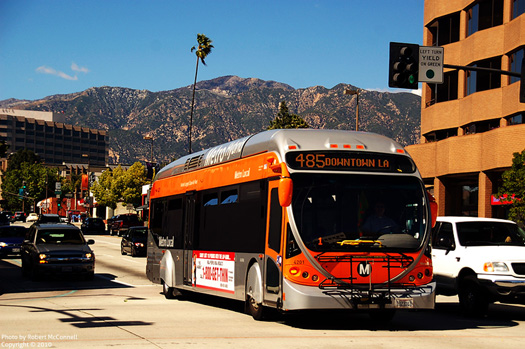By Jennifer Flynn

Without a doubt, image is important to Bus Rapid Transit (BRT). Sleek looking vehicles, rail-like stations, advanced technologies and a strong brand identity are just a few of the features that help communicate the message: This is not just a regular bus service. With BRT specifically designed to emulate the high quality service of rail-based transit, there is still much the industry must know about its capability to replicate the premium image of rail and how and why it attracts ridership.
NBRTI recently completed a study to examine the tangible and intangible factors that influence public perceptions of different transit modes.
Tangible service attributes – like travel cost, travel time, and service frequency – are concrete and pretty straightforward to measure, while intangible attributes, such as comfort, ride quality, and safety, are a bit fuzzier. They’re based more on opinion and, as such, are more difficult to measure and quantify.
We designed the NBRTI study around two market research exercises; first a series of focus groups followed by an attitudinal survey. We fielded the research in Los Angeles, CA due to the city’s range of different rapid transit modes, including BRT-Lite (Metro Rapid), Full-Service BRT (Orange Line), light rail (Gold Line, Blue Line) and heavy rail (Red Line).
Focus Groups
The focus groups revealed a large number of service attributes that affect user perceptions of different transit modes. Survey participants rated each transit mode from “very poor” to “very good,” both overall and according to the 14 core service attributes. We used the overall rating for each transit mode as a proxy for ridership attraction. These findings show that people do perceive alternative rapid transit modes differently. Furthermore, differences in perception appear to be independent of any particular mode or technology.
The survey data revealed significant differences in the overall ratings of the different modes, which we grouped accordingly into four statistically distinct tiers. Overall, ratings generally followed the relative level of investment required to provide each service.
To dig a little deeper we examined the actual level of investment of each mode, defined as capital cost per mile in 2005 dollars. The figure below compares each mode in terms of overall rating and actual level of investment, and also shows the four tiers.
This analysis showed a large disparity in investment level. Yet, aside from the two obvious extremes of the local bus and the Red Line, the ratings achieved by the remaining transit services didn’t simply follow respective levels of investment. For Tiers 2 and 3, both the Metro Rapid “BRT-Lite” and Orange Line “Full-Service” BRT outperform their investment costs, achieving a slightly higher rating than their more expensive light rail counterparts. Overall, these findings show that, in the perception of the public, BRT (even in its lower-investment forms) can compete with rail-based transit in return for lower capital cost investments.
We then took a look at the influence of the different tangible and intangible attributes on the overall ratings of each mode. It appears that modal perceptions are determined by a combination of tangible and intangible attributes, with reliability being the most important tangible factor and safety the most important intangible factor. Interestingly, ratings for the local bus were found to be more heavily influenced by the tangible attributes of travel time, service span and service frequency, while the rail modes were more heavily influenced by the intangibles of safety and comfort. Focus group transcripts suggest that urban context influences the attractiveness of a transit service by directly impacting perceptions of intangible service attributes such as safety. That urban context may in fact have a larger impact on overall perceptions than whether a service is rail- or bus-based.
Overall, findings show that Full-Service BRT can replicate both the functionality standards and image qualities normally associated with rail, and that even a lower-investment BRT-Lite service performs remarkably well in terms of overall rating achieved per investment dollar. Visit www.nbrti.org for the full report.
Jennifer Flynn serves as a Senior Research Associate for the National Bus Rapid Transit Institute, Center for Urban Transportation Research of the University of South Florida, Tampa, FL.
